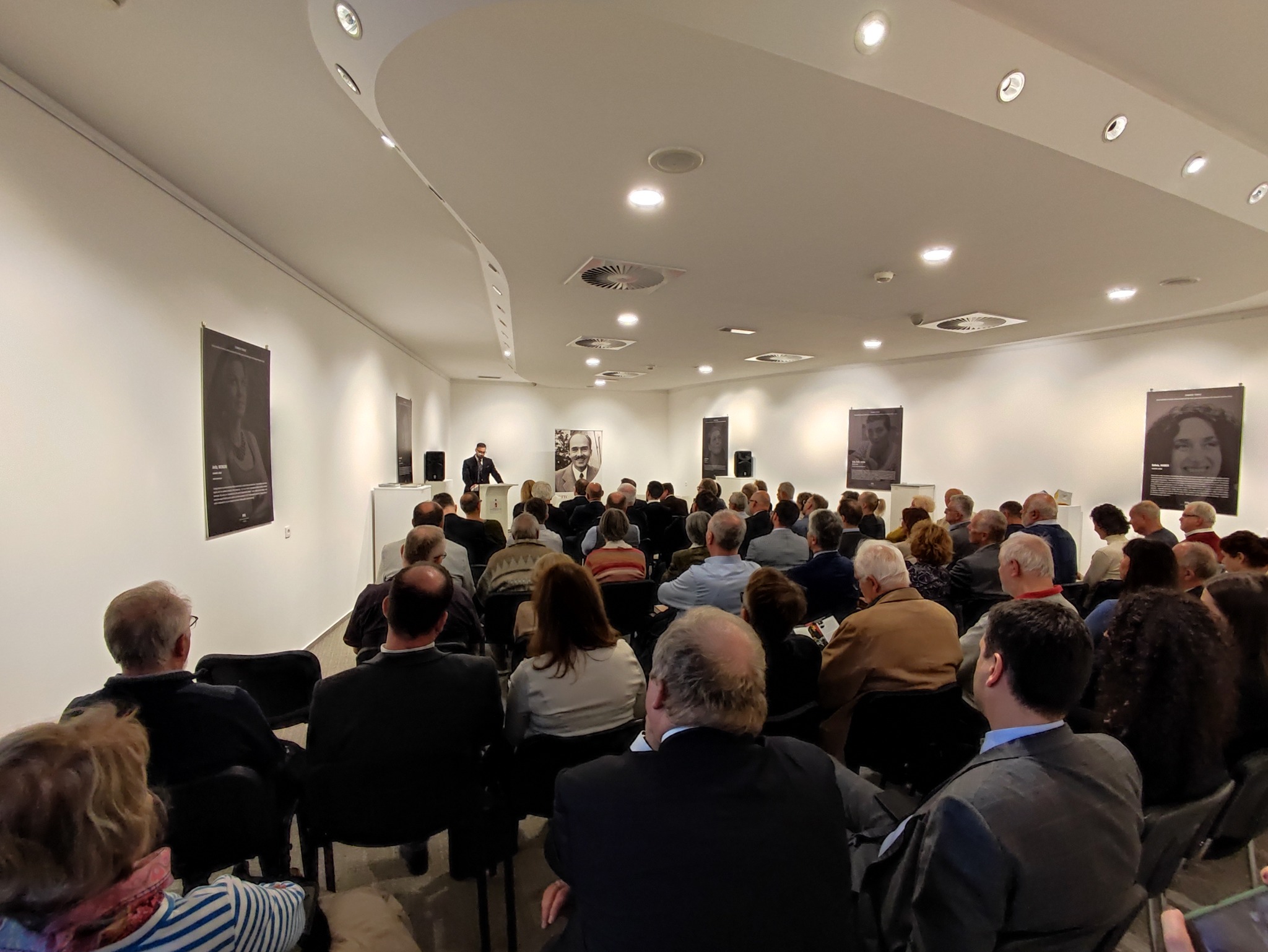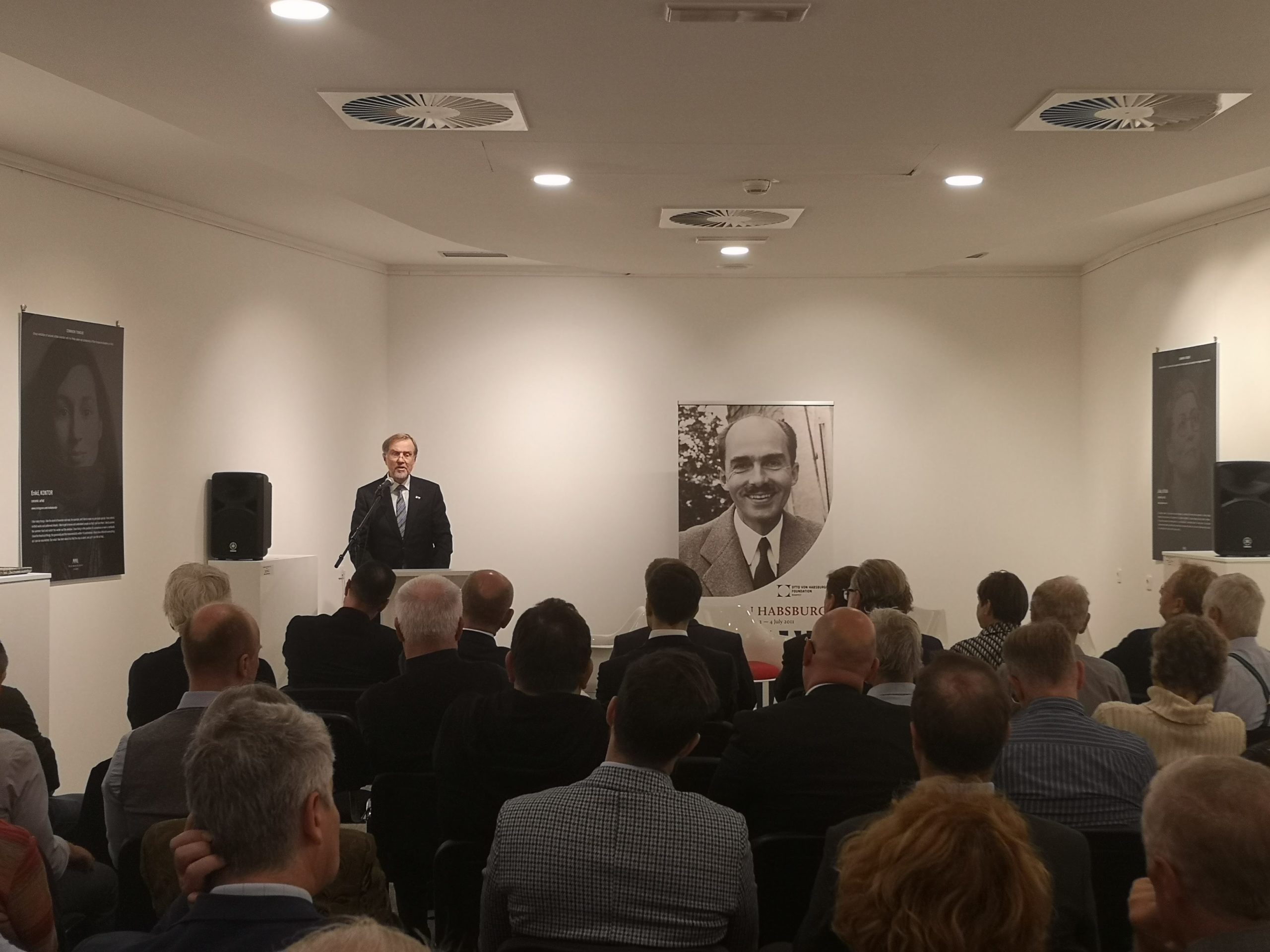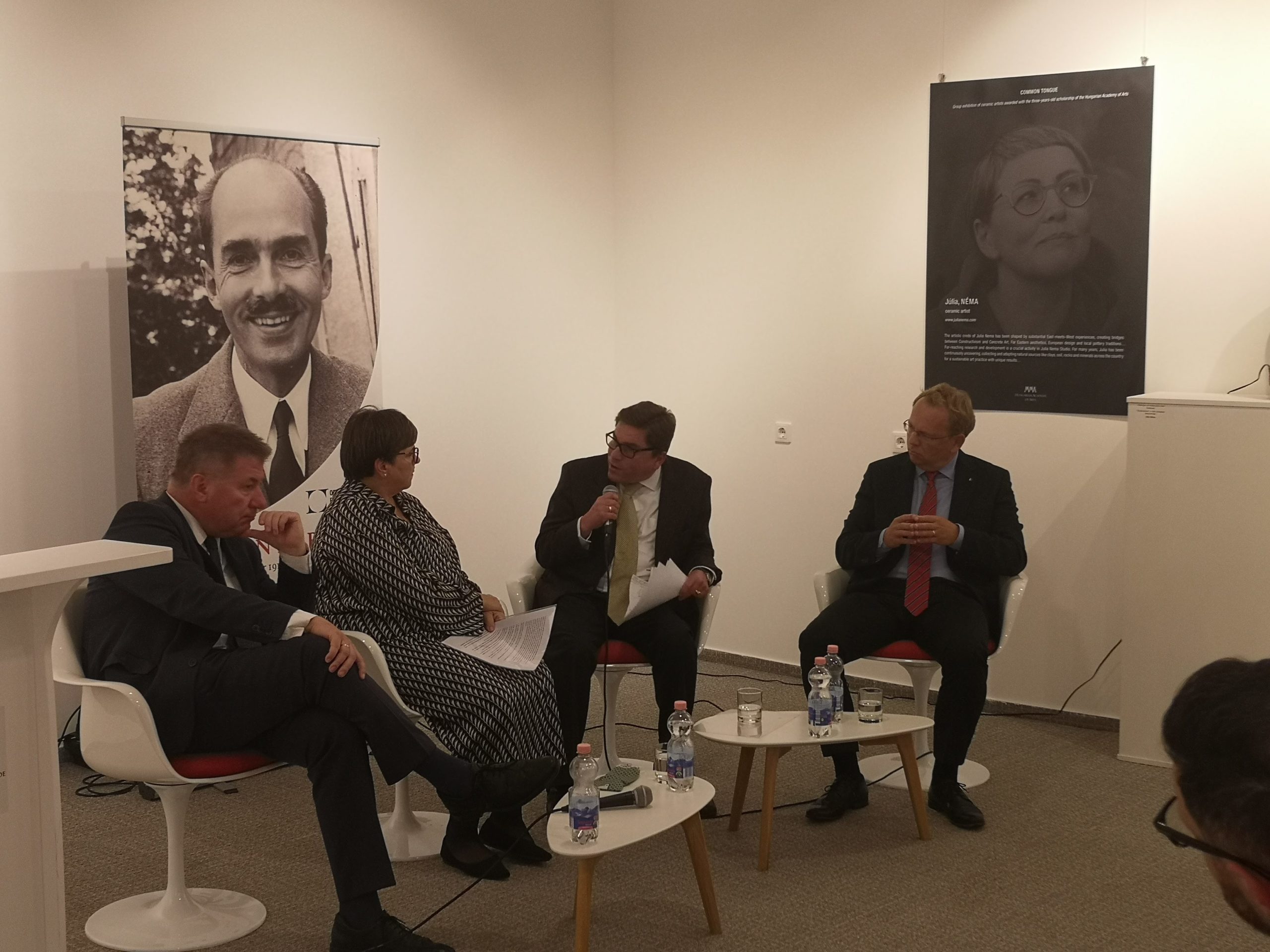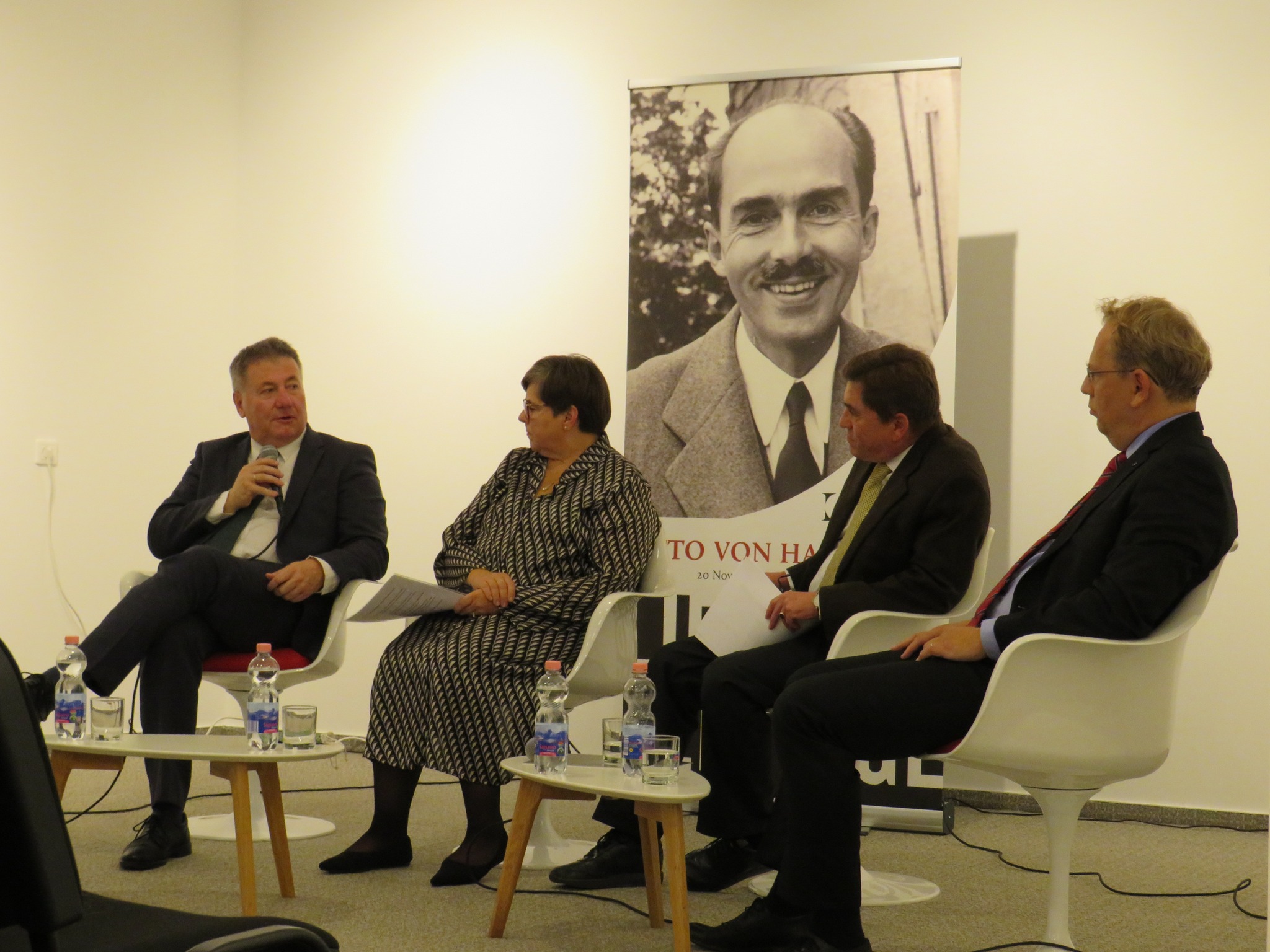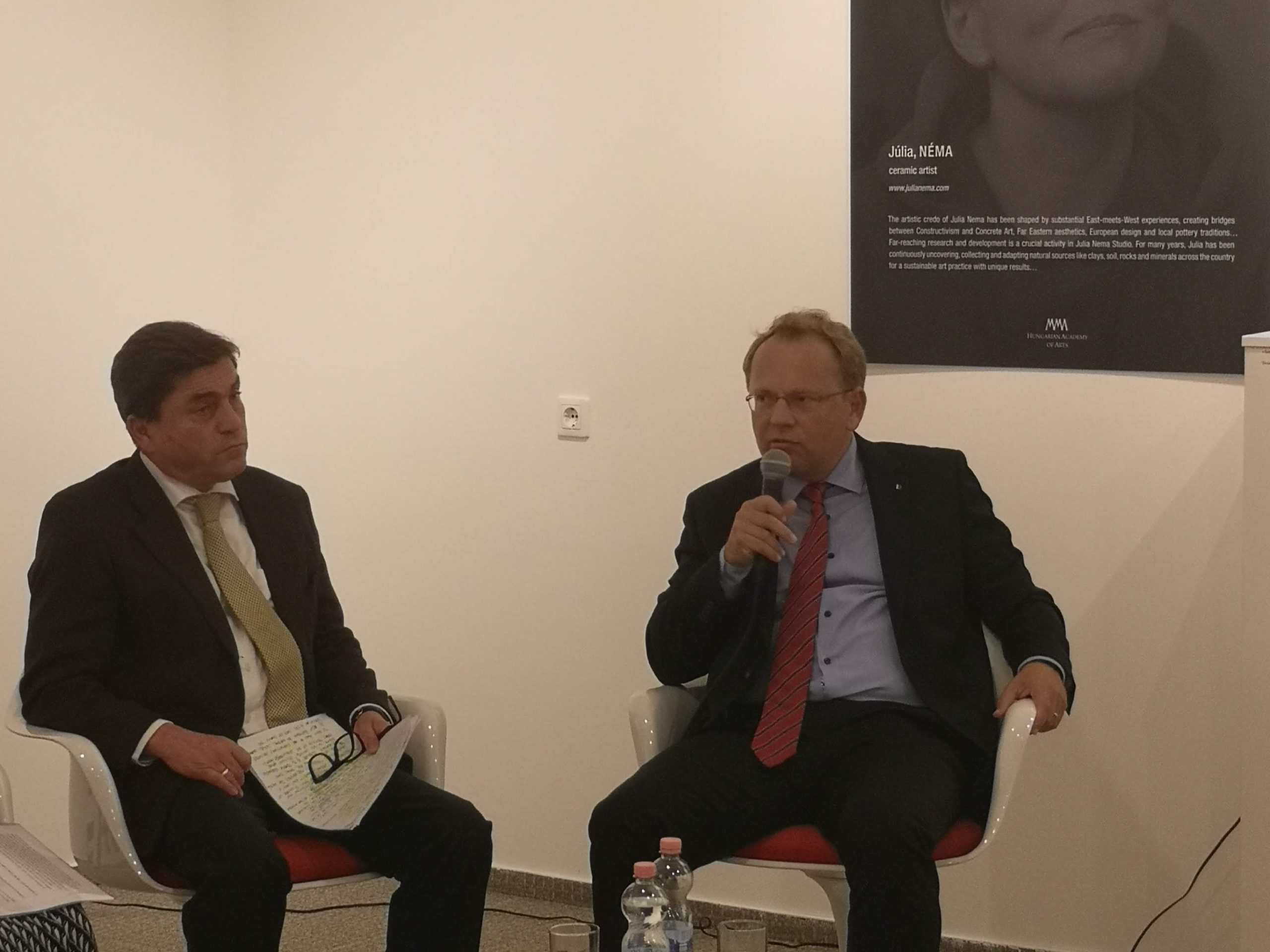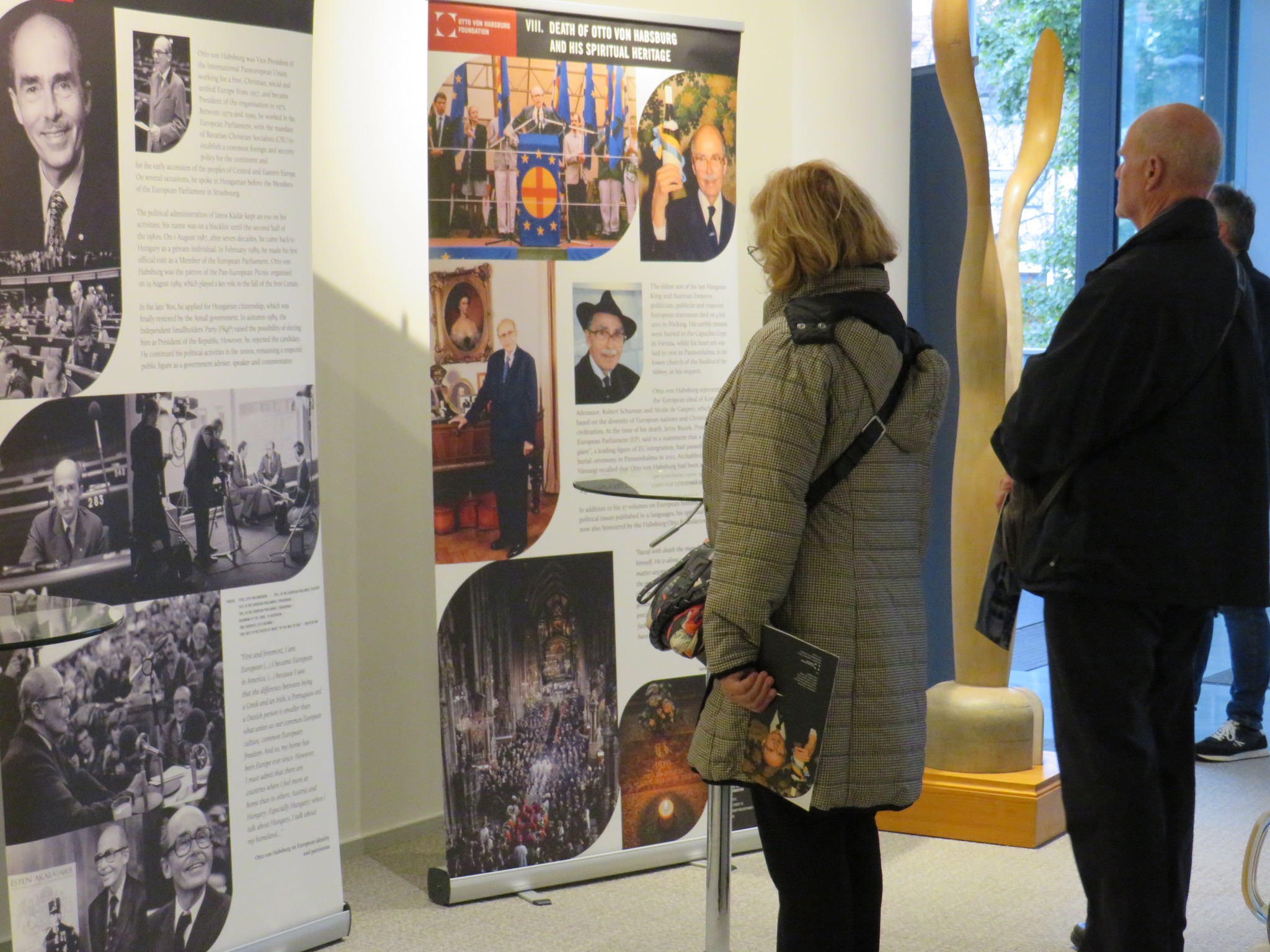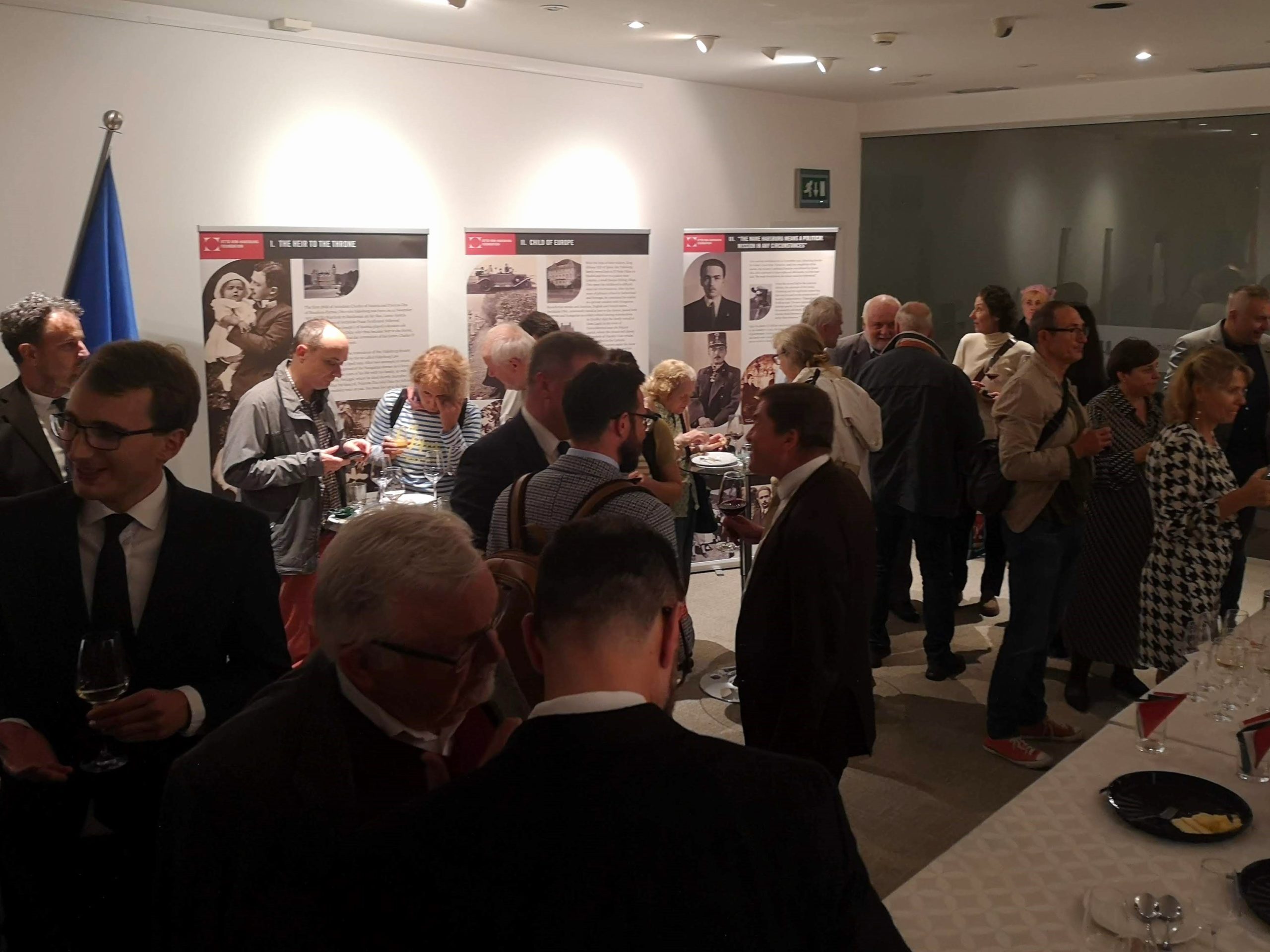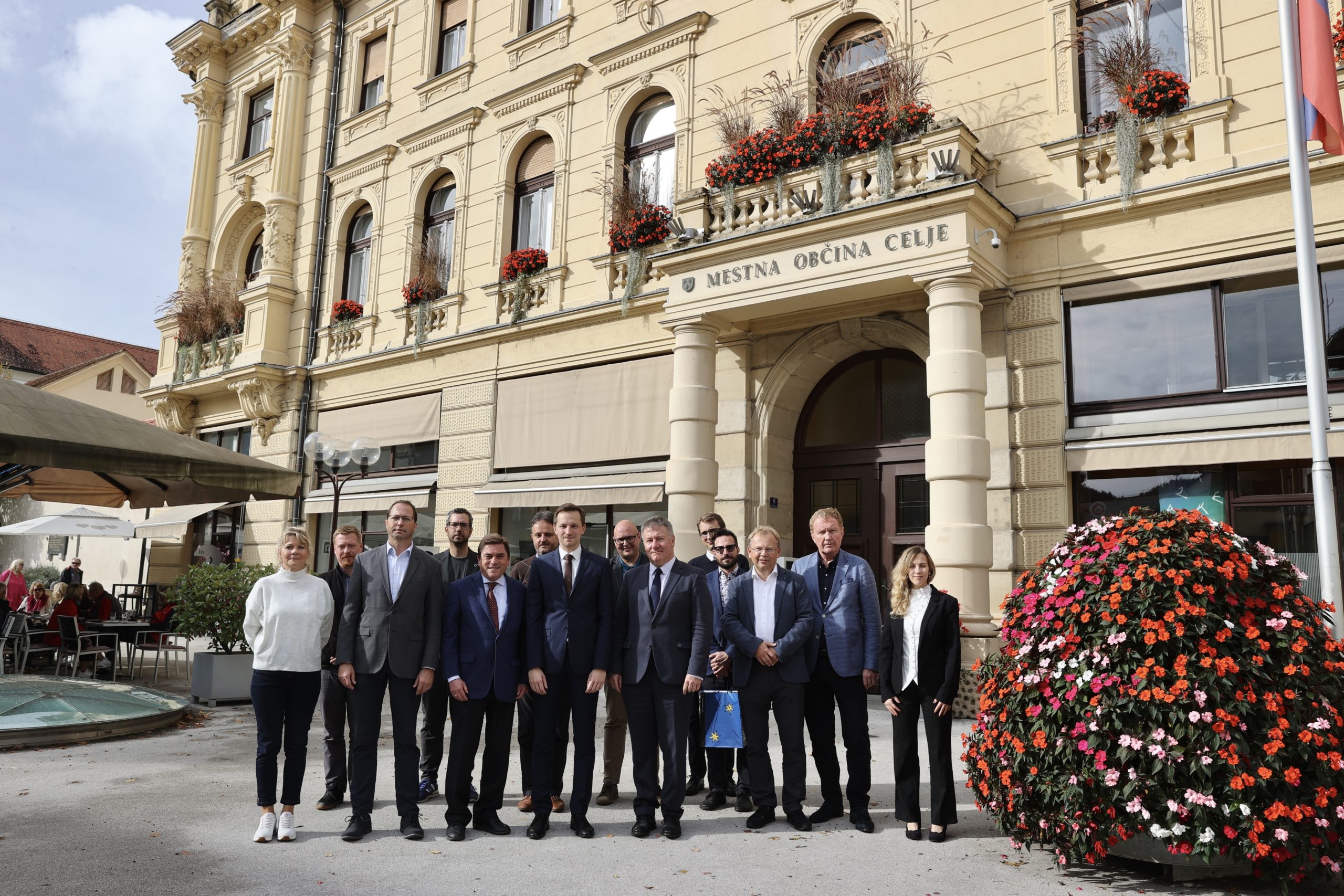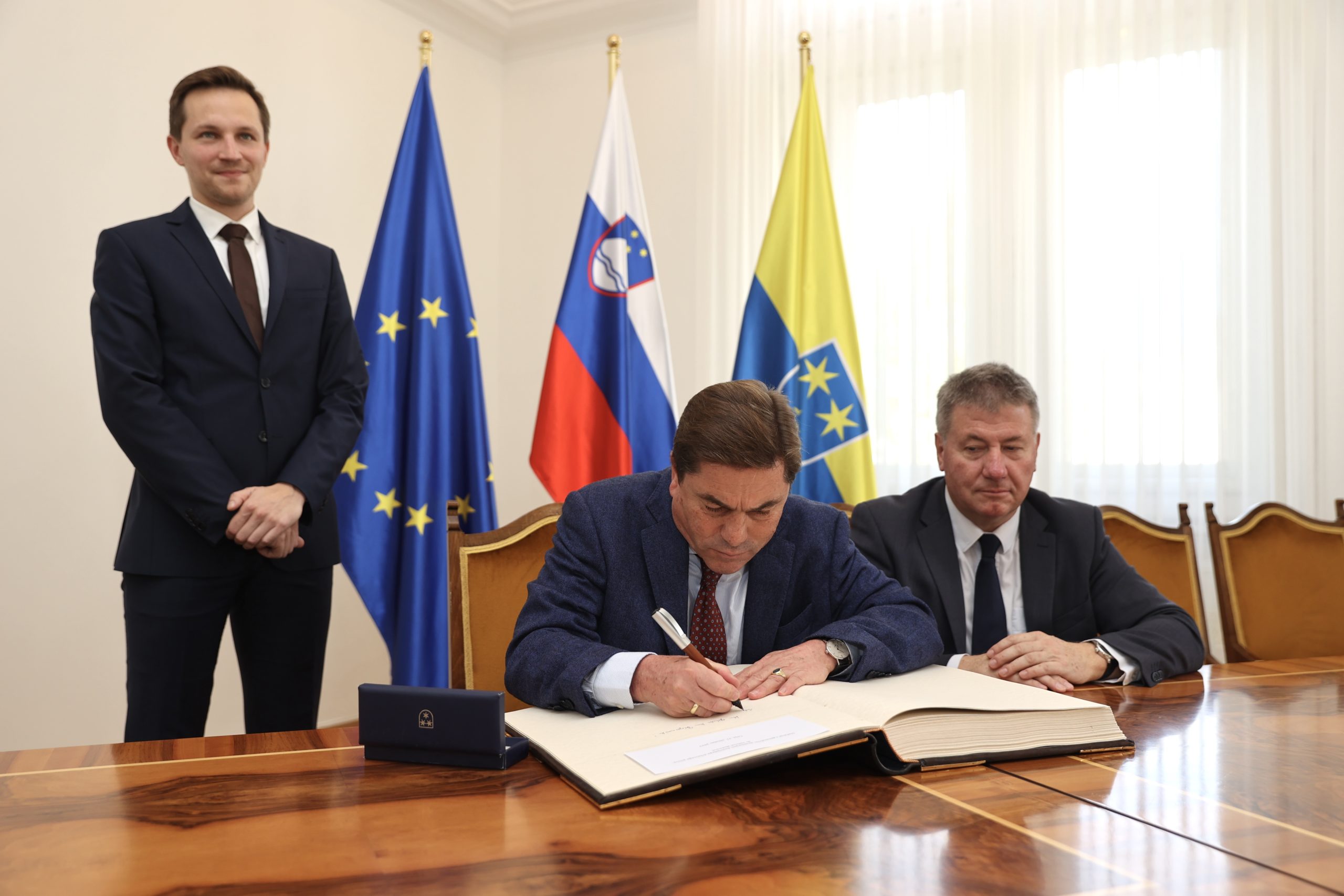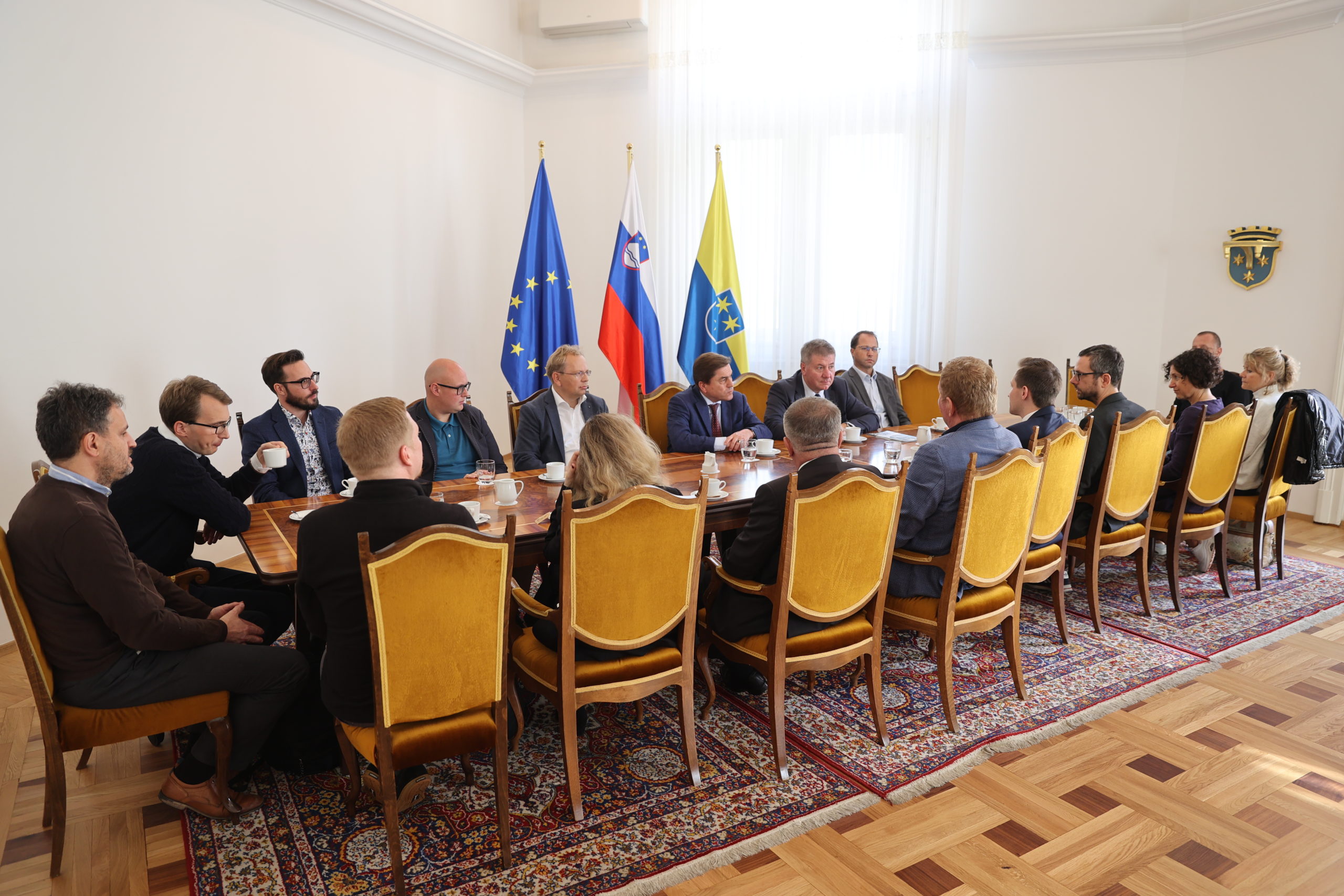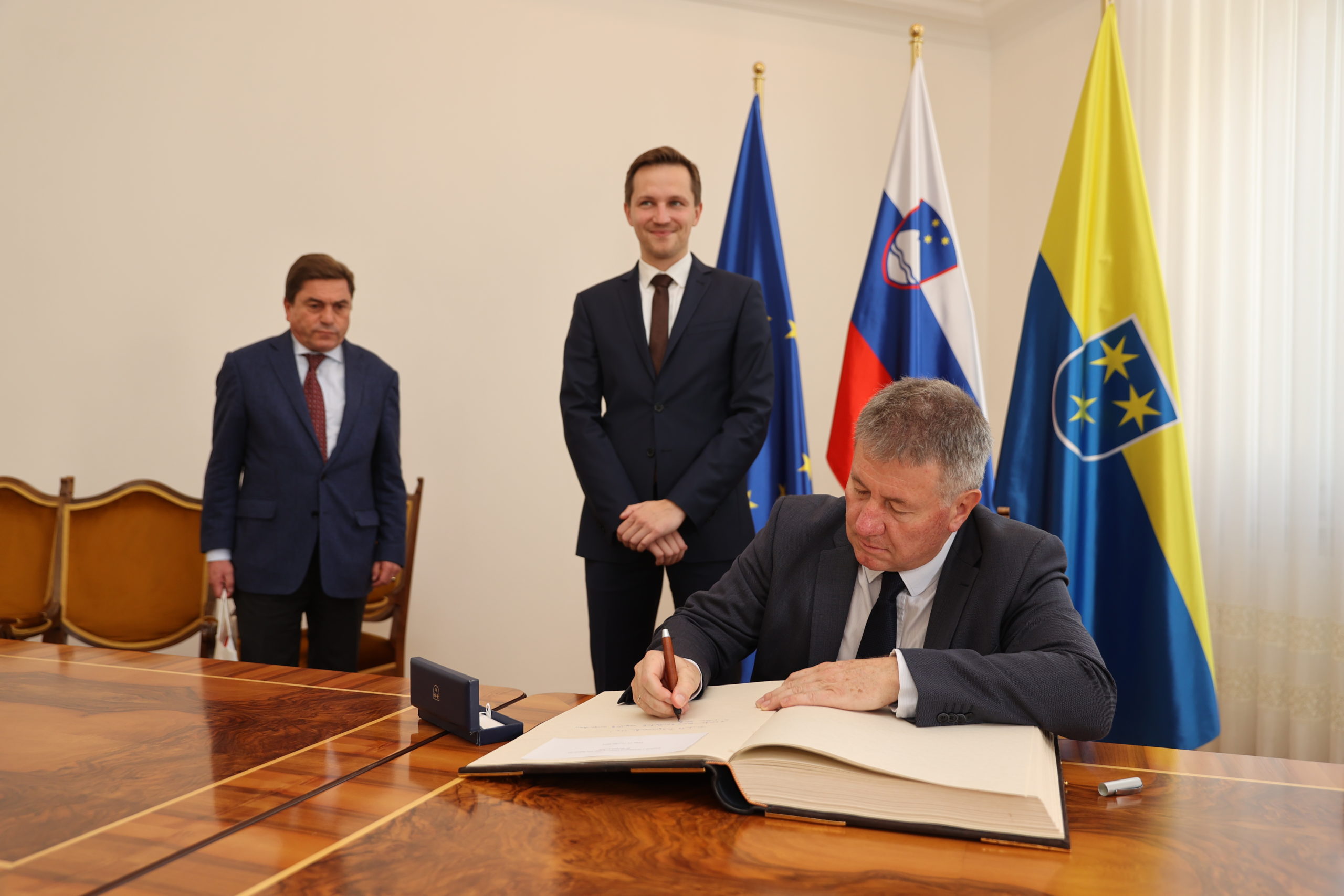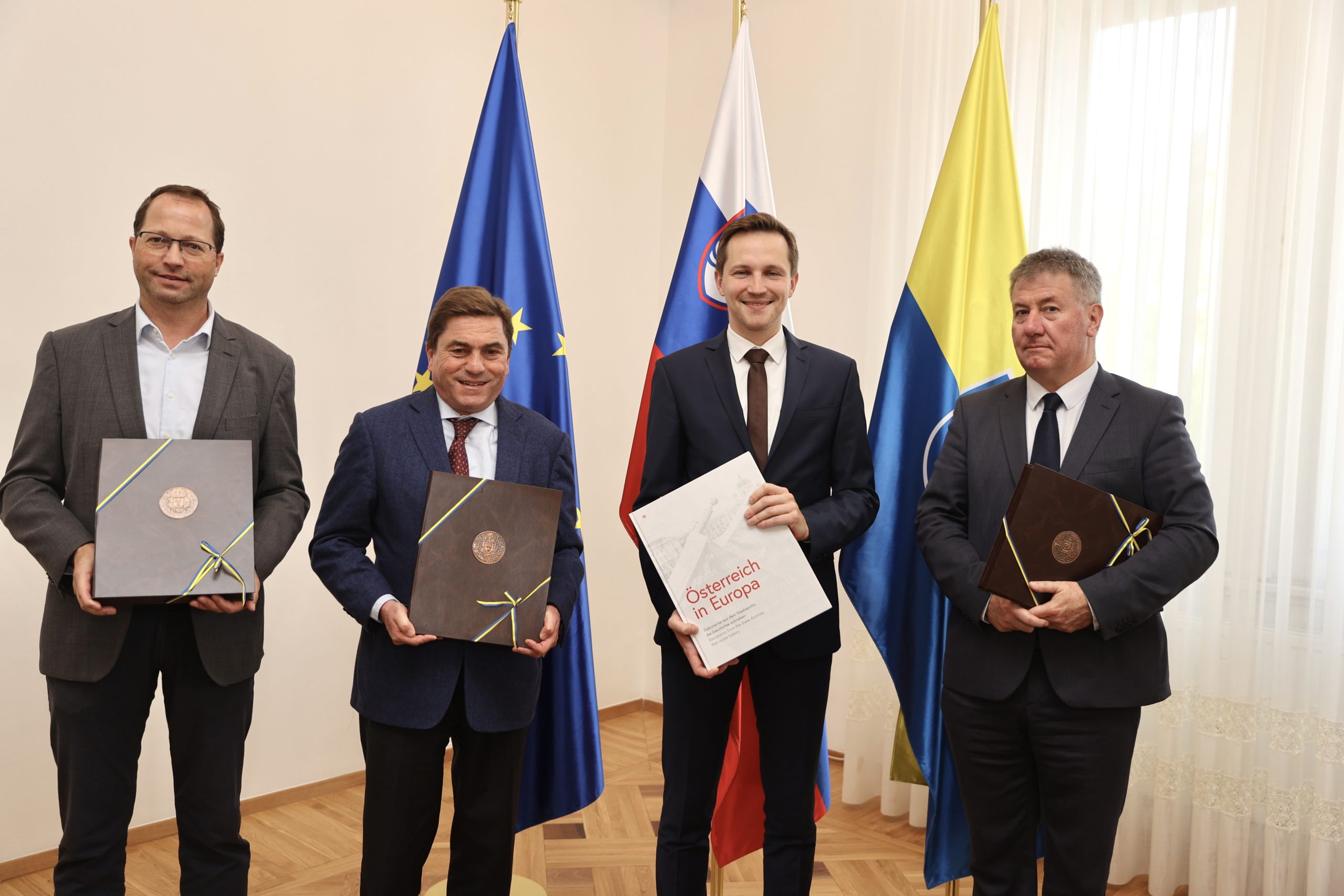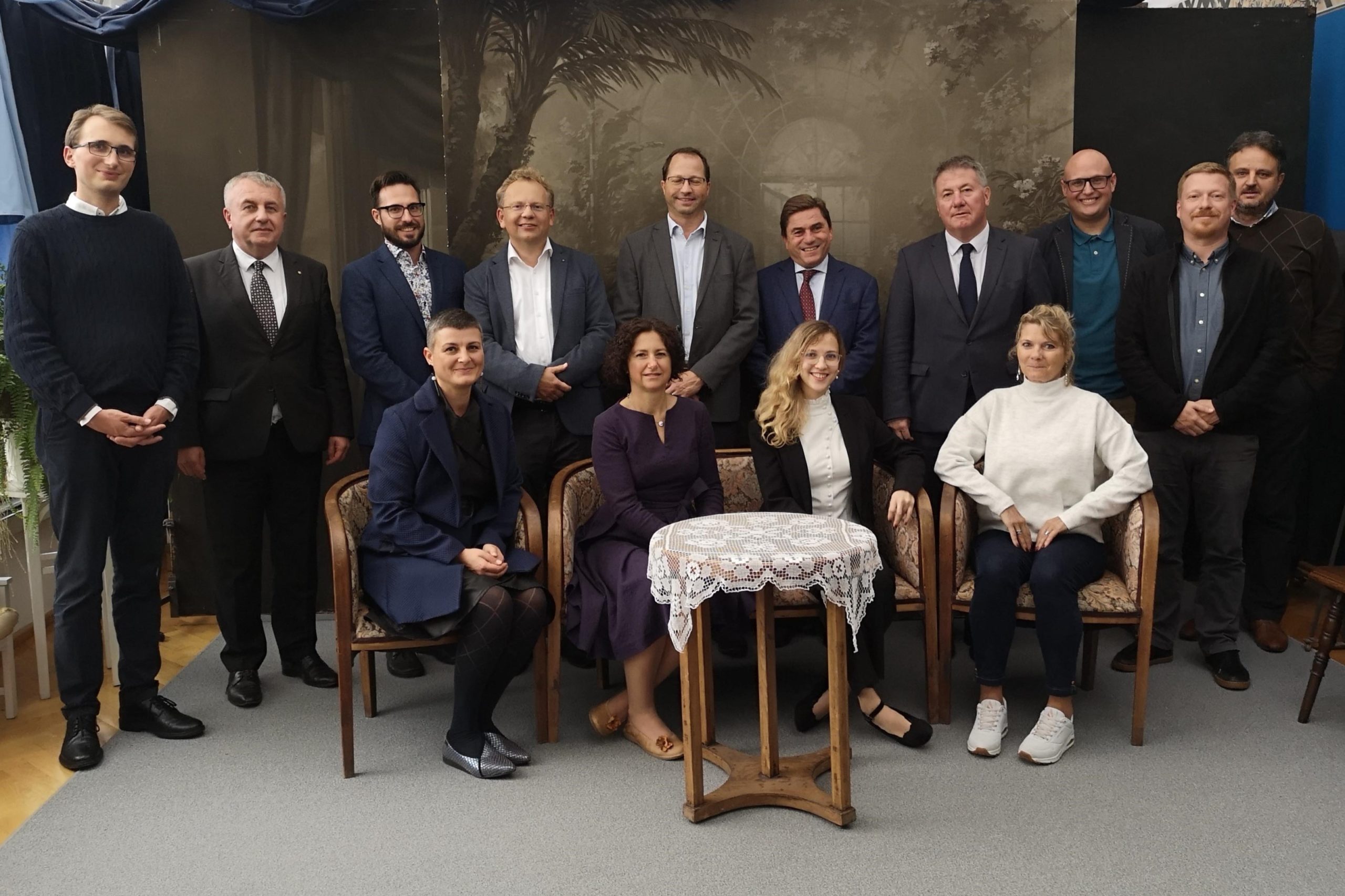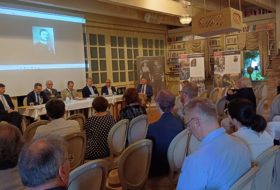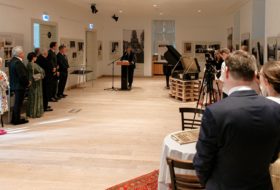The joint event of the Otto von Habsburg Foundation and the Liszt Institute Hungarian Cultural Centre was opened with a round table discussion, where the guests were welcomed by Andor Ferenc Dávid, Ambassador Extraordinary and Plenipotentiary of Hungary. As he stated, a hundred years on, the dynasty that played a decisive role in the history of our countries will be judged differently. However, we all agree that family, European integration, democratic values and Christianity – the ideals for which Otto von Habsburg strived throughout his life – remain a common ground for us in the 21st century.
Lojze Peterle, former Prime Minister and Foreign Minister of Slovenia and member of the European Parliament, shared his memories of Otto von Habsburg with the audience. (The complete speech will be available shortly.) Gergely Prőhle, Director of our Foundation, stressed the responsibility of the nations of today’s Europe – especially of Central Europe, including the former Monarchy – bear to the legacy of the last heir to the throne, as his thoughts have not only historical value but also a very relevant and meaningful message for today.
The discussion was moderated by historian Petra Svoljšak (Academy of Sciences and Arts of Slovenia, Milko Kos Institute of History). At her request, the participants assessed the varying Habsburg image in the eras since 1918. Helmut Wohnout, Director General of the Austrian National Archives, first spoke about the attitude of the Austrians. He reminded the audience that the Social Democrats had undoubtedly rejected Otto von Habsburg. From his father’s untimely death, through his attempted return at the end of the Second World War, to the long obstructed grant of his citizenship, their opposition lasted until 1972, when the memorable handshake between the former Crown Prince and Chancellor Kreisky took place. The National Socialist movement also defined itself as anti-Habsburg, as evidenced by the fact that the annexation of the country to the Third Reich was dubbed ‘Sonderfall Otto’ in Berlin.
Gergely Prőhle referred to the Otto culture of the 1920s and 1930s, which can be detected throughout Hungarian history even beyond the fall of communism. As an alternative approach to the Habsburg image of the 1988-90s, he suggested that the growing attention devoted to the dualism era was not accidental: the reform-communist politics of remembrance sought to divert public attention from more radical criticism of the system by tacitly tolerating this more innocuous tradition. Nevertheless, the success of the films about Otto von Habsburg proved to be symptomatic.
From the Slovenian side, Andrej Rahten (University of Maribor, STMA), former Ambassador of Slovenia to Vienna, responded that the Kingdom of Serbs, Croats and Slovenes had sanctioned the sporadic legitimacy manifestations strictly because it treated the issue as an international matter. It was only in the 1980s that the resistance and reluctance began to ease, reaching the stage of sympathy for the figure of Otto in the early 1990s. This process is visible from the press reports on the past and the dynasty. The historian, whose research on the subject has recently been published (V prah strti prestol. Slovensko dojemanje habsburške dynasties v postimperialni dobi. Celje, 2023. [The throne is crumbling. The Slovenian perception of the Habsburg dynasty in the post-imperial era]) recalled: Otto von Habsburg visited Ljubljana during the South Slavic War and addressed the newly born state’s parliament. His gesture appealed to the idea of a common Europe, and his direct personality had a tangible impact on the perception of the former dynasty. “Although he was not one of the founding fathers of the European Union, he was the founding father of the united Europe”, concluded Professor Rahten.
After the discussion, a great number of people visited the roll-up exhibition and enjoyed the hospitality of the Institute.
The following day, on their way home, the members of our Foundation visited Professor Rahten’s hometown, Celje. In the third most populous city of Slovenia, the former seat of the Cille family (well-known from Hungarian history), they were welcomed by the mayor and the heads of the municipality. After a convivial meeting, Helmut Wohnout and Gergely Prőhle wrote memorial lines in the town’s “Golden Book”; then they toured the sights of Celje. There are plans to open the “Life and Heritage” exhibition here in the spring of 2024.

